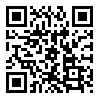
year 11, Issue 2 (Journal of Acoustical Engineering Society of Iran 2024)
مجله انجمن علوم صوتی ایران (مهندسی صوتیات سابق) 2024, 11(2): 77-82 |
Back to browse issues page
Download citation:
BibTeX | RIS | EndNote | Medlars | ProCite | Reference Manager | RefWorks
Send citation to:



BibTeX | RIS | EndNote | Medlars | ProCite | Reference Manager | RefWorks
Send citation to:
Rahi A, Jafari R. Reliability of capacitive pressure sensor with silicon carbide and polysilicon materials. مجله انجمن علوم صوتی ایران (مهندسی صوتیات سابق) 2024; 11 (2) : 10
URL: http://joasi.ir/article-1-269-en.html
URL: http://joasi.ir/article-1-269-en.html
Abstract: (1078 Views)
In this research, a MEMS capacitive pressure sensor is simulated with two materials, silicon and silicon carbide. The purpose of simulating this sensor is to analyze and investigate the effect of various factors such as diaphragm geometry, ambient temperature, manufacturing materials, and manufacturing tolerances on the performance and reliability of the system. The simulations show that the increase in temperature and manufacturing tolerances can change the reliability of the system. The sensor is simulated for two materials, silicon, and silicon carbide. A comparison of the simulation results shows that a silicon carbide sensor with less stress experience and higher reliability is a more suitable material for making a pressure sensor. Silicon carbide shows 92% reliability and silicon 81% reliability, which means failure of 80 and 190 pieces out of every 1000 pieces, respectively. In the following, fatigue simulations are performed for the pressure sensor diaphragm, and the effect of manufacturing tolerances, diaphragm area and thickness, working pressure, and the type of circular and square diaphragms on the fatigue life is also investigated.
Article number: 10
Type of Study: Research |
Subject:
Hydroacoustics
Received: 2023/07/3 | Accepted: 2024/05/12 | Published: 2024/11/22
Received: 2023/07/3 | Accepted: 2024/05/12 | Published: 2024/11/22
Send email to the article author
| Rights and permissions | |
 |
This work is licensed under a Creative Commons Attribution-NonCommercial 4.0 International License. |


